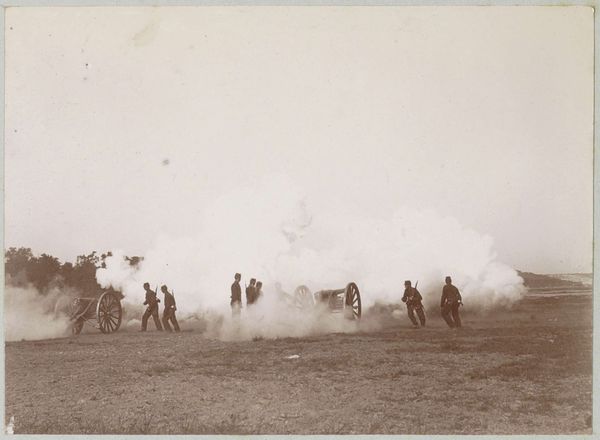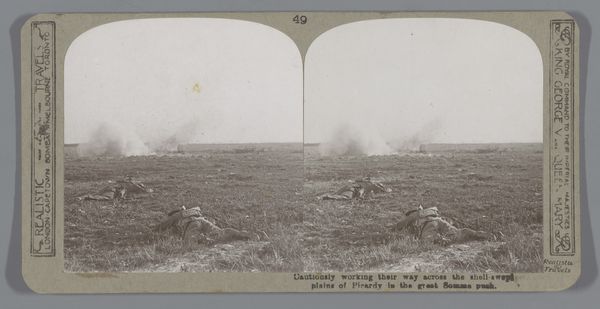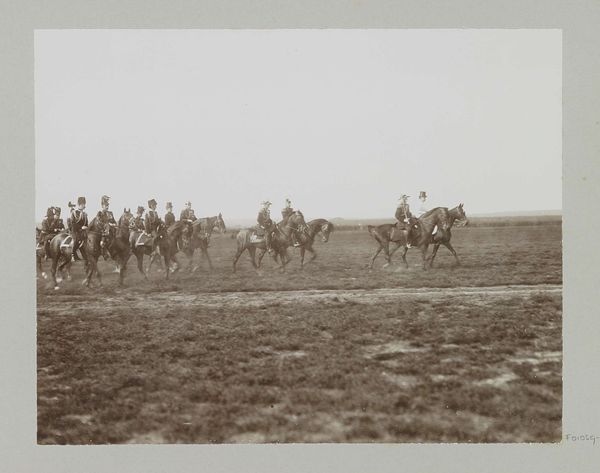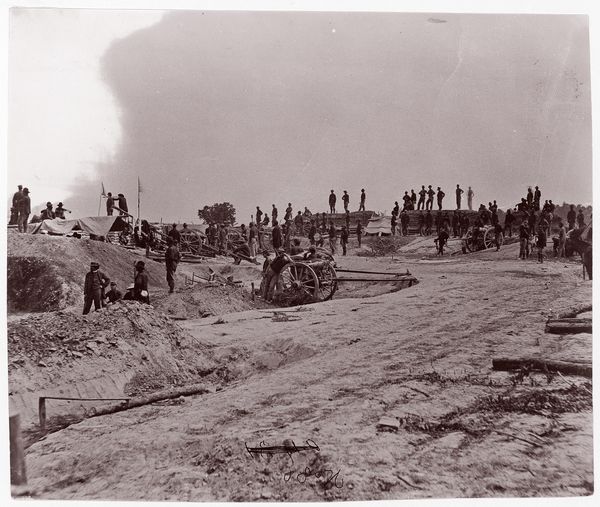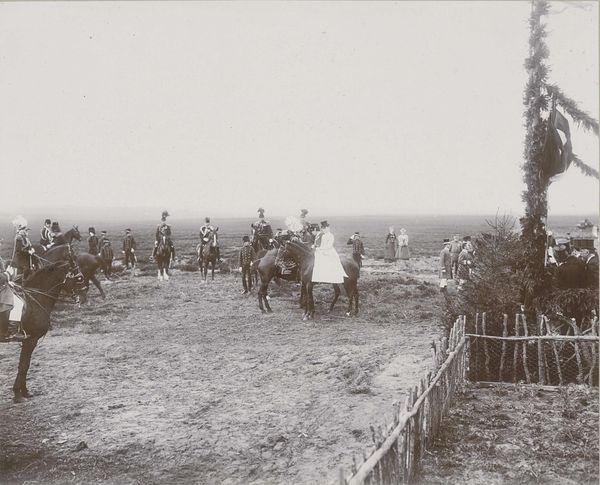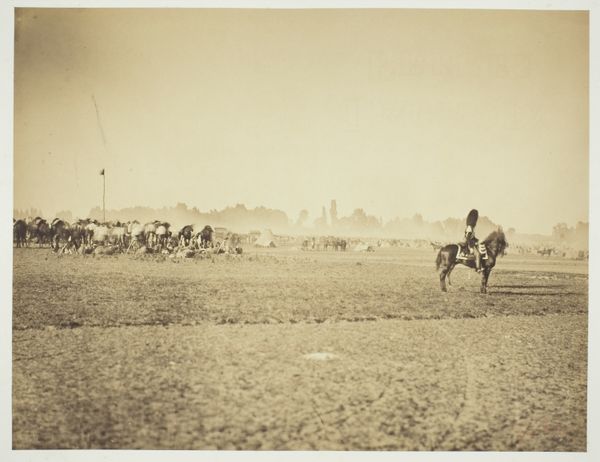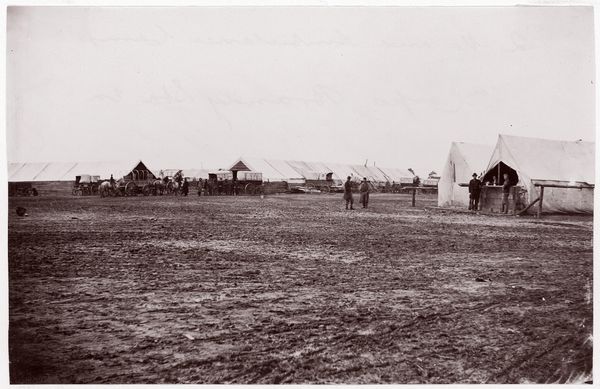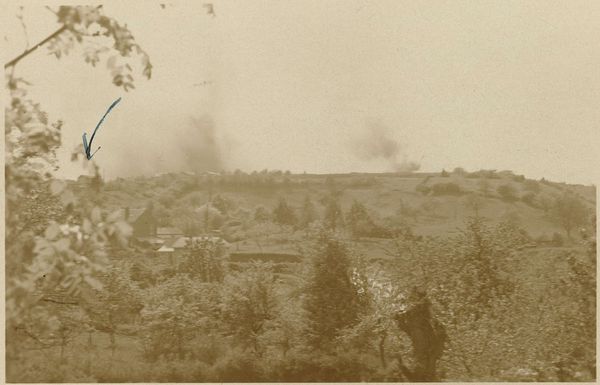
Dimensions: height 80 mm, width 110 mm
Copyright: Rijks Museum: Open Domain
Curator: Standing before us is "Military Exercise with Cannons at Fontainebleau," a gelatin-silver print taken around 1896, currently held at the Rijksmuseum. The photographer remains unknown, as is sadly often the case. Editor: My first impression is a quiet violence, if that makes sense. The image feels very still, yet that smoke betrays an action, a controlled explosion almost. The gray palette reinforces a kind of solemn tension. Curator: Indeed. Observe how the photographer arranges the soldiers; their upright posture and placement to the side create horizontal lines. These function almost like visual anchors that help draw the viewer’s eyes towards the vanishing point and atmospheric perspective on display. It’s fascinating that they captured the light at what seems to be a key point in the demonstration. Editor: But let's consider what it *means* to depict military might as landscape—an empty stage for demonstrating dominance. Who were these images intended to impress, and whose stories are conveniently absent? There's also the question of labor here, of bodies made insignificant within the larger machinations of power and empire-building, wouldn't you agree? Curator: I recognize the imperial implications here. At the same time, let's remember that photography was then a new technology; artists experimented, recording modern events like military exercises with what was also cutting-edge methods. It also reflects a general fascination with light and motion within Impressionistic landscape traditions—albeit one using photography instead of paint! Editor: And yet, that fascination carries consequences when divorced from social critique. This photograph presents us not merely with military prowess, but a potent message that we risk internalizing uncritically unless we bring awareness. So what does seeing violence here do to our collective psychology? Curator: Point taken! Looking closer, you have to also acknowledge that the image lacks precise detail and feels open. That ambiguity adds, unexpectedly, to a certain aesthetic quality – it has rhythm that invites questions more than answers, which also feels rather modern for the era. Editor: It does open multiple windows. Analyzing these subtleties through intersectional lenses highlights its complex layers and latent politics. Images aren't neutral. Curator: I appreciate that point; it adds further considerations about technology’s implications when recording historical, geopolitical tensions. A great picture that opens multiple analytical pathways. Editor: A very thought-provoking, unsettling image indeed.
Comments
No comments
Be the first to comment and join the conversation on the ultimate creative platform.
